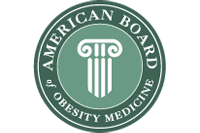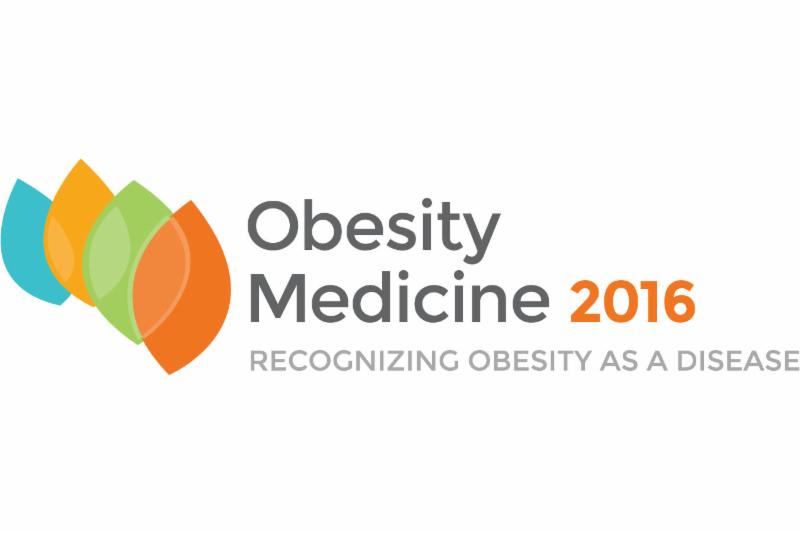 2016 version of the Obesity Algorithm® released today
Every year, leaders in the field of obesity medicine update the Obesity Algorithm to reflect the latest information about treating patients affected by obesity. The 2016 version of the Obesity Algorithm was released today and is now available for free online! The 2016 Obesity Algorithm has expanded nutrition and bariatric surgery sections and contains information about every stage of treatment, from evaluating patients for obesity to maintaining long-term weight loss and health. Download your free copy of the Obesity Algorithm online now. |
Help us grow the field of obesity medicine and earn rewards
The upcoming Obesity Medicine Basics courses take place in New Orleans (Jan. 23), Philadelphia (Jan. 30), Raleigh (Feb. 20), and San Diego (Feb. 27). If you know a health care professional in these areas, refer him or her to Obesity Medicine Basics and help us increase the number of health care professionals with basic training in clinical obesity treatment. For every person you refer, we'll give you a $50 Amazon giftcard as a thank you for helping us grow the field.* *To earn your rewards, remind the person registering to list you as the member who referred them to the course.
|
 Grocery store chain removes candy from checkout lanes
Last week, the grocery store chain, Aldi, announced its decision to remove candy from checkout lanes, replacing it with trail mixes and dried fruit -- more wholesome snacks for those last-minute impulse purchases. Shoppers will still be able to buy candy and junk food at the store, but healthier choices will be on display in the high-traffic checkout areas. The company plans to transition to this new model in nearly 1,500 stores in the U.S. by the end of 2016. Read more about this story. |

ABOM item writing committee seeks new members
Help shape the future of obesity medicine by joining the American Board of Obesity Medicine (ABOM) item writing committee. The item writing committee oversees the creation of new items for the question bank for the obesity medicine certification exam and is currently seeking new members. Item writing committee members are provided with annual item writing training in coordination with the National Board of Medical Examiners, ABOM's test administration partner. To apply to join the ABOM item writing committee, complete an application. Contact ABOM at info@abom.org to learn more. Please note: To maintain absolute confidentiality and separation between exam writers and all preparatory or review courses for the exam, item writing committee members are not allowed to teach, lecture, provide seminars, assist, make comment, or in any way participate in such courses while serving ABOM. |
 |
Body fatness charts based on BMI and waist circumference
Lee, W. S. Obesity, 2016.
Using body mass index (BMI) and waist circumference (WC) to measure adiposity has its limitations. Data from the National Health and Nutrition Examination Survey (NHANES) were used to create percent body fat (PBF) charts based on BMI and WC. Using nationally representative data of the U.S. population, PBF charts were developed by gender and race with the goal of helping to determine a person's level of fatness by having measurements of a person's body weight, height, and WC. Bioelectrical impedance analysis was used for the measure of PBF. The analysis found that for men, BMI is largely inconsequential, and WC plays a more important role in determining PBF levels. For women, there is an interaction between BMI and WC, and for women to have lower body fat, they should pay attention to both their BMI and WC measurements. The charts that were developed may be useful in determining a person's level of fatness without having to use machinery or other instruments to directly measure body fat. View article
|
Revealing the burden of obesity using weight histories
Stokes, A., and Preston, S. H. PNAS, 2016.
Researchers examined the association between excess weight and mortality using data from the 1988-1994 and 1999-2010 NHANES linked to death-certificate records from the National Death Index through 2011. The analysis found that weight histories provide at least two pieces of valuable information about mortality risks: 1) Obesity at a particular age may predispose to illness, regardless of weight at higher ages, and 2) weight loss is often associated with illness. The authors suggest that because most previous studies are based on BMI at the time of the survey, it is likely that the effects of excess weight on mortality have been consistently underestimated. View article
|
|
|
*These events are hosted by organizations other than OMA. Contact the organization directly for details.
|
Use the member badge artwork to display your member pride on your website and in your email signature! Log in to get the code.
|
|
Executive Director
Sponsorships and Exhibits Manager
Operations Manager
Education Coordinator
Communication Manager
Executive Director of the Obesity Treatment Foundation
|
|
101 University Blvd.,
Suite 330
Denver, CO 80206
|
|
|
Dietary fiber and satiety: The effects of oats on satiety
Rebello, C. J., O'Neil, C. E., and Greenway, F. L. Nutrition Reviews, 2016.
Dietary fiber mainly consists of carbohydrate polymers that are undigested by humans. Oats are high in a type of dietary fiber called beta-glucan, have high viscosity, and may reduce low-density lipoprotein cholesterol. Oats have received a number of health claims, including heart disease reduction, glucose control, and energy balance regulation. This review article outlines the effects of dietary fiber on energy balance and appetite control. The authors suggest that oat beta-glucan may improve satiety and offer a strategy for helping individuals adhere to diet regimens by controlling hunger and the desire to eat. View article
|
 |

This spring, we're headed to lively San Francisco for Obesity Medicine 2016, your leading resource for certification exam review and the premiere source of education about managing an obesity medicine clinic, nutrition, and the comprehensive approach to obesity treatment. Earn up to 30.5 CME/CE and attend the courses that most interest you!* While you're there, don't miss all that San Francisco has to offer. Take a trip to Alcatraz for a taste of history, walk along the waterfront or the Golden Gate Bridge, or visit one of the city's many cultural districts. |
Review Course for the ABOM Exam
13.25 CME/CE | April 6-7
Helps prepare those planning to take the American Board of Obesity Medicine (ABOM) certification exam.
| Practice Management Essentials
6.5 CME/CE | April 6
Explains the best business practices for running an obesity medicine clinic, from setting up a practice to boosting patient retention.
|
|
Nutrition Course
6.75 CME/CE | April 7
Outlines the latest evidence-based findings about nutrition and helps you select appropriate nutrition plans for your patients.
| Spring Obesity Summit
17.25 CME/CE | April 8-10
Addresses topics related to current and emerging research, evidence-based treatment approaches, technologies, and practical methods used by obesity medicine clinicians.
|
|
|
*The Review Course for the ABOM Exam runs concurrently with Practice Management Essentials on Wednesday and the Nutrition Course on Thursday. Registration for the Review Course includes two days of class time, and switching between courses is not allowed.
|
 This one-day course is worth up to 7 CME/CE hours and provides introductory-level training about the evaluation and treatment of patients affected by obesity. Refer a colleague to a course in their area and allow us to introduce them to obesity medicine -- you'll receive a $50 Amazon gift card for every attendee who lists you as their referring member! Learn more about this course. Course dates and cities: |
|
|
|
The Obesity Medicine Association and the Obesity Treatment Foundation thank our 2016 Corporate Advisory Council members for their continuous support.
|
© 2016 Obesity Medicine Association. All rights reserved. Materials may not be reproduced, redistributed or translated without written permission. Advertising disclaimer: Under a policy approved by the OMA executive committee and exhibitor/advertiser review committee, commercial companies may apply to advertise in OMA publications. Approval does not imply endorsement or official recognition of particular products or services.
|
|
|
|